Blissful Haeinsa Temple
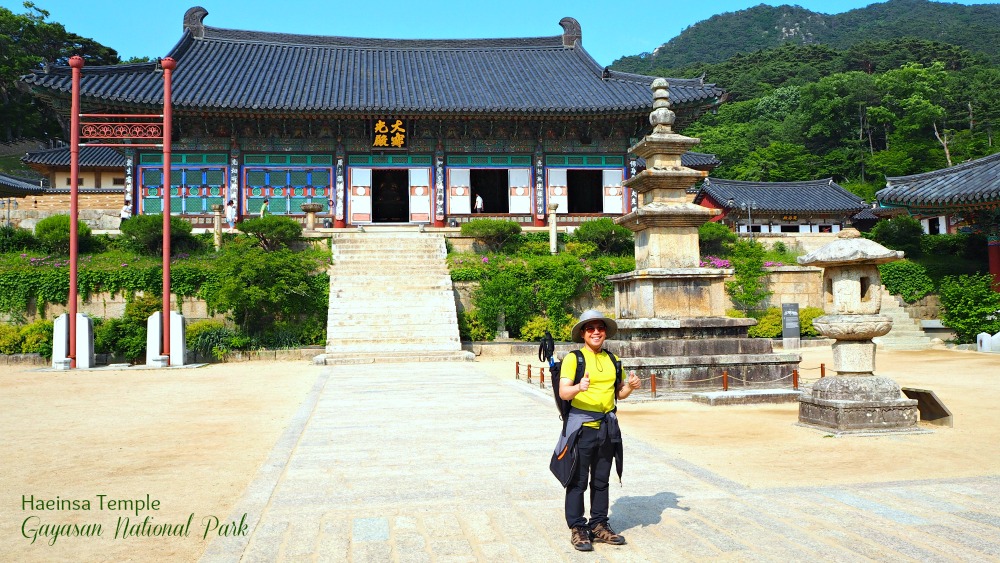 Abbie at the center of the site with Daeungjeon Hall (behind) of Haeinsa Temple (2019)
Abbie at the center of the site with Daeungjeon Hall (behind) of Haeinsa Temple (2019)Introduction
Nestled amidst the lush, verdant folds of the awe-inspiring Gayasan Mountain, Haeinsa Temple stands as a sentinel of serenity and a custodian of centuries-old secrets.
As you tread upon the timeworn paths leading up to this sacred sanctuary, the whispers of a thousand ancient tales seem to reverberate through the trees, carried by the soft caress of the mountain breeze.
Here, within the embrace of the majestic Gayasan National Park in South Korea, Haeinsa Temple is not just a destination but an immersive journey that takes you back through over a millennium of spiritual, cultural, and historical legacy.
Haeinsa, which means ‘Reflections on a Smooth Sea,’ epitomizes an oasis of tranquility in a tumultuous world. Founded in 802 during the Shilla Dynasty, the temple has survived the passing of empires, the ravages of wars, and the relentless march of time. You are immediately enveloped in timeless grace and contemplative calm as you enter its gates.
But there is more to Haeinsa than its ethereal beauty and spiritual aura. It is also a bastion of Korean Buddhist culture and a treasure trove of historical artifacts. The temple is most renowned for housing the Tripitaka Koreana, a massive collection of Buddhist scriptures engraved on over 80,000 woodblocks, which is also a UNESCO World Heritage site.
This masterpiece of craftsmanship, meticulously completed over several decades in the 13th century, is an invaluable repository of Buddhist teachings and an astounding testament to the technological prowess and cultural dedication of the people of the Goryeo Dynasty.
As you wander the sacred halls and courtyards of Haeinsa Temple, let the blend of natural splendor, architectural magnificence, and spiritual resonance transport you to a realm where history and harmony coalesce.
This ageless temple, standing resolute amidst the cradle of mountains, is not just a place of worship but a living embodiment of Korea's indomitable spirit and rich heritage.
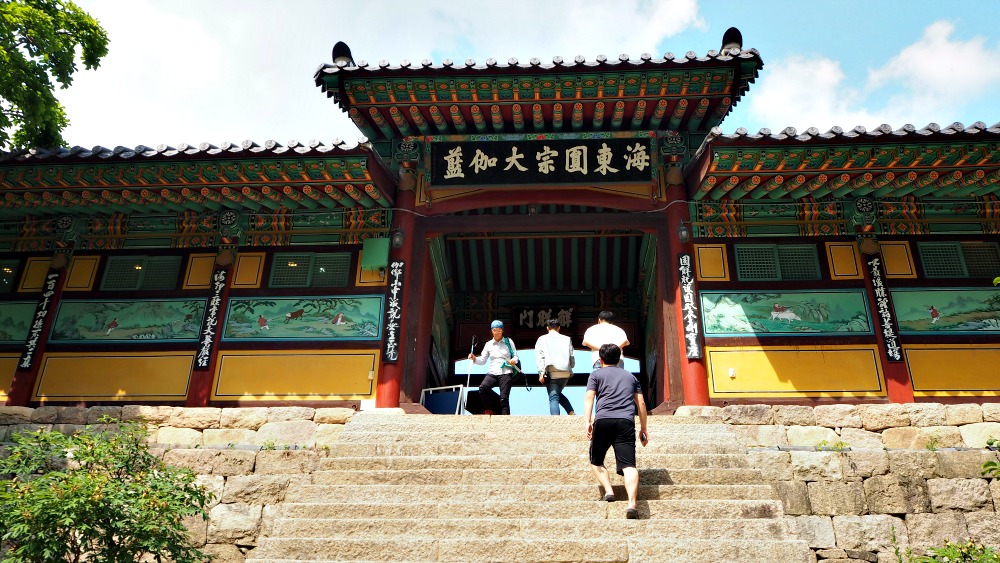 One of the gates to the main Haeinsa Temple.
One of the gates to the main Haeinsa Temple.haeinsa temple site
Haeinsa Temple is one of the most important temples in South Korea. This historic and beautiful temple site is tucked at the scenic side of Gayasan Mountain, a national park belonging to Baekdusan mountain range.
Haeinsa is also called "Beopbo Jongchal," which means the most important temple that holds the precious words of Buddha Gautama Siddhartha.
FACTS: Haein Temple house the Palman Daejang Gyeong--the Eight Thousand Tripitaka scriptures. "Beopbo" means the words of Buddha and "Jongchal" means one of the most famous temples.
Haeinsa Temple offers the fundamental resource of Hwaeom Sect Buddhism. The Palman Daejang Gyeong (or Tripitaka Koreana) is a symbol of national harmony in the Korean nation's faith.
Hwaeom refers to the Korean name of a Buddhist school, which is popularly known as the Huayan School of Chinese Buddhism which developed from the Mahayana.
In Korea, the leading schools of Mahayana Buddhism are the Zen or Seon School, which specializes in meditation; the Pure Land or Jeongto School and the Hwaeom School, which focuses on Buddhist doctrines.
Brief Historical Background
Haeinsa Temple was first established during the Silla Dynasty. It is one of the "10 Hwaeom Temples" that promote the spread and enhancement of Hwaeom Sect of Buddhism.
The Avatamsaka Sutra is considered the most influential Mahayana sutra of East Asian Buddhism (or Flower Garland Sutra) that was written in the 4th century in Central Asia.
Avatamsaka Sutra is the highest of the Mahayana Sutras which was originally called "Daebang Gwanbul Hwaeom Gyeong" but is now popularly called Hwaeom Gyeong.
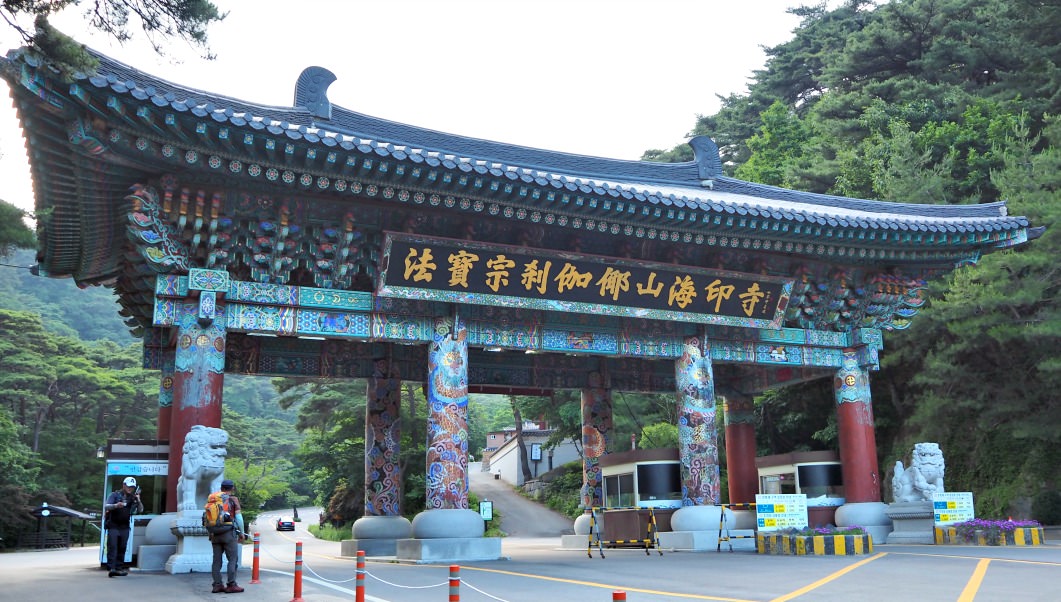 Road entrance gate towards the temple area
Road entrance gate towards the temple areaIn that sutra or scripture, the word 'Haein Sammae' exist from which this temple is named after. Haein Sammae literally means "the stage that the various true images of the universe are reflected... on the sea... when the world is compared to the infinitely deep and wide sea and wild waves... the people's agonies and delusions have finally stopped."
The temple was built by two Buddhist monks named Suneung and Ijeong. Suneung was a disciple of Master Uisang (AD 625-702), the first ancestor of Haedong Hwaeom Sect.
Haeinsa Temple is considered the most sacred place of Korean Buddhism and houses the most important Buddhist treasures and cultural heritage.
There are about 70 pieces of national treasures, including...
- Banyasa Wongyeongwangsabi (memorial stone of Buddhist master Wongyong for the king),
- Geonchil Mokho Hirangdaesasang (dry lacquered wooden statue of Buddhist master Hirang),
- Yeongsan Hoesangdo (paintings of Sakyamuni Buddha's preaching on Mount Yeongchwisan-Spirit Mountain),
- Cheongryangsa Seokjo Seokkayeorae Jwasang (stone Buddha's seating statue at Cheongyrang Temple),
- Samcheongtap (three stone pagoda at Cheongryang Temple),
- Janggyeong Panjeon complex (Tripitaka Koreana woodblocks),
- Costumes of Gwanghaegun (Prince Gwanghae, 5th king of Joseon Dynasty)
It is said that Prince Gwanghae, his wife and his court ladies' costumes are being kept as valuable materials at Haein Temple.
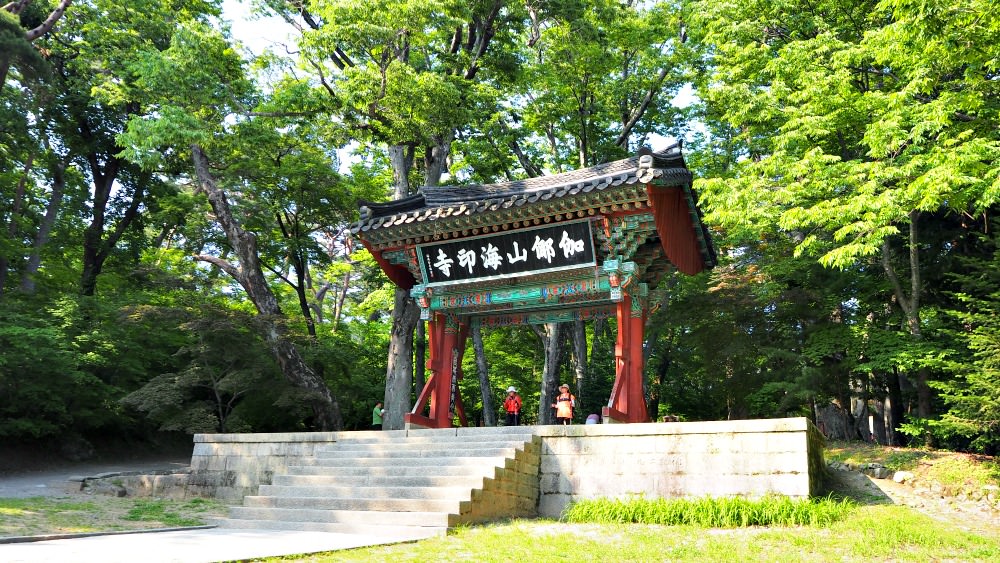 Small shade and gate to the temple area
Small shade and gate to the temple areaThree-Story Stone Pagoda
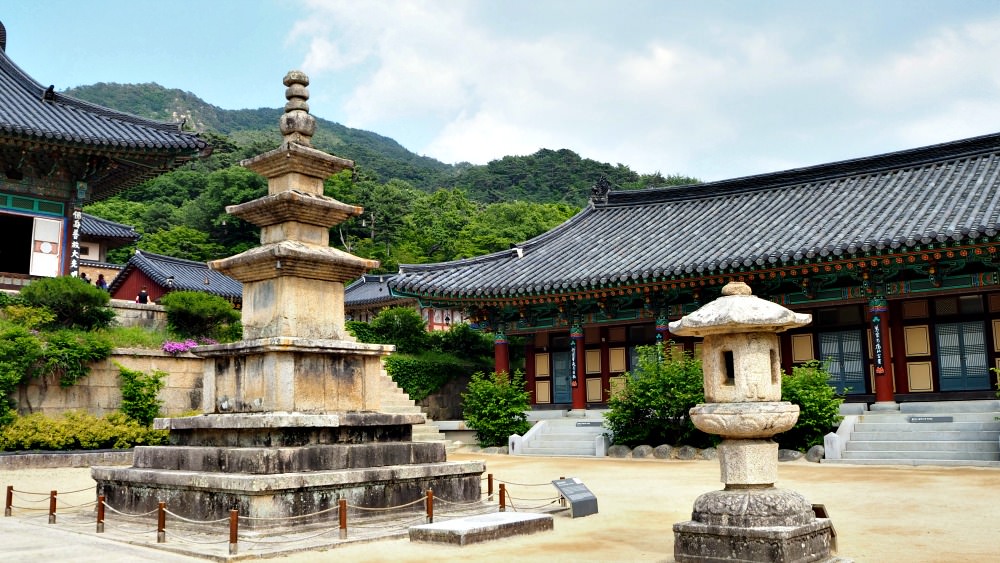 Old Stone Pagoda and Stone Lantern
Old Stone Pagoda and Stone LanternTypically, pagodas were designed and created as depositories of Buddhist relics ('sari') including the sutras and images of the Buddha.
However, it seems that the temples became the best places to keep those Buddhist relics.
This pagoda is called Birotap (or Pagoda of Vairocana) which is a typical type of pagoda during the Unified Silla period.
Stone Lantern
Stone Lantern
Such lanterns do not only function as temple lights but symbolize the "peaceful light of Buddha." Typically, there are set up on the temple grounds to provide light to the entire monastery and temple site.
Specifically, the way this lantern was crafted with technique and style points that it is also created when the pagoda of Vairocana was built (just near it).
Great Hall of Tranquil Light
According to the inscription beside it, this structure is The Great Hall of Tranquil Light. It mentions that since Haeinsa has no Hall of Great Hero (Daeungjeon Hall) where Shakyamuni Buddha is housed, Haeinsa Temple's main Buddha Hall is the Great Hall of Tranquil Light which is dedicated to Vairocana Buddha.
(Vairocana is the presiding Buddha who is also the Dharma-Body Buddha that symbolizes the eternal truth. 'Vairocana' means saving the world with light, which is signified by the sun illuminating the world with light.
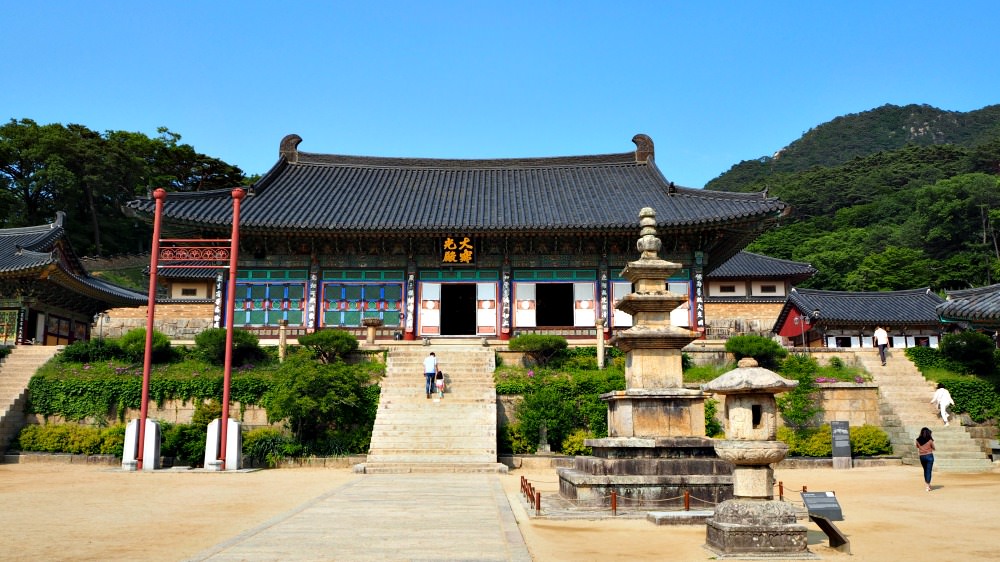 The Great Hall of Tranquil Light
The Great Hall of Tranquil Light Rightside view
Rightside view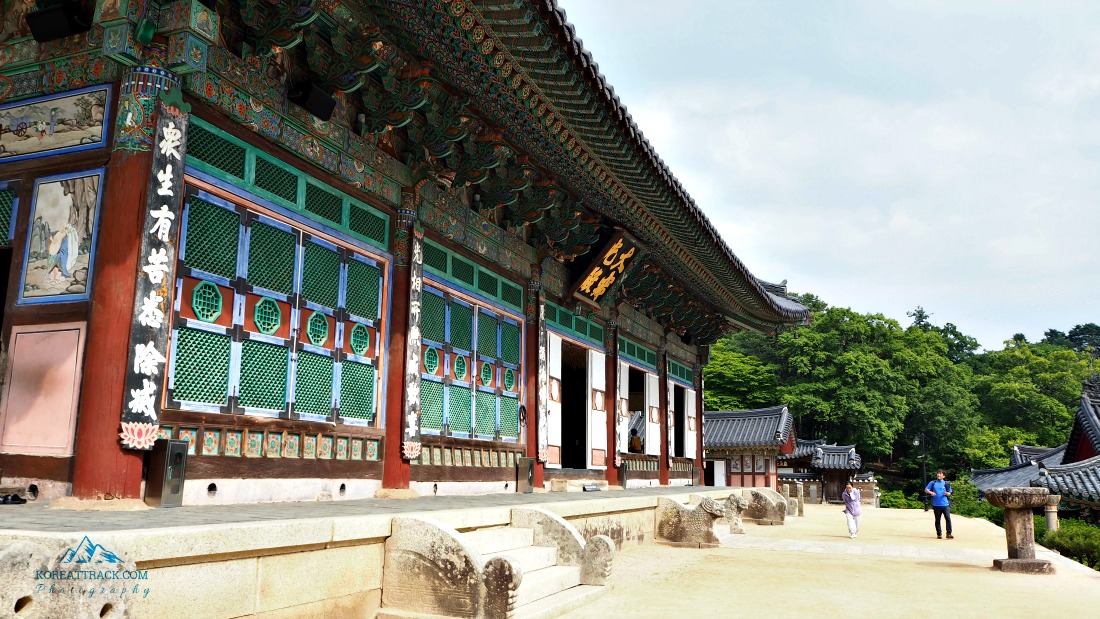 Taken from its leftside
Taken from its leftsideThe Great Hall of Tranquil Light, the Great Hall of Radiance, or the Hall of Vairocana is also called the Hall of Flower Garland, which means the Lotus-Treasury World that keeps all things in this universe.
This Hall was originally a two-story building called the Hall of Vairocana. The Great Master Hakjo renovated and renamed it into The Great Hall of Tranquil Light with the help of the queen in 1488 during the Joseon Dynasty.
The building suffered destruction several times by fire. The present structure was a reconstruction by Monk Jewol with the help of Governor Kim Nogyeong of Gyeongsang Province in 1817 (17th year of King Soonjo of Joseon Dynasty).
The main Buddha of Haeinsa, Vairocana Buddha, is at the center of this Hall. The statue is sitting on the Sumero Platform depicting Vairocana Buddha's image teaching on Mount Sumero.
In the Hall, you will see Vairocana Buddha being attended to on the left by Manjusri (Bodhisattva of Wisdom) and on the right by Samantabhadra (Bodhisattva of Great Vow and Action) who are both wearing crowns.
The three form the Three Honored Buddhas which are registered as Tangible Cultural Property No. 38 of Gyeongnam Province.
Daebirojeon (대비로전)
 Daebirojeon Hall also houses Vairocana Buddha statues
Daebirojeon Hall also houses Vairocana Buddha statuesThis Hall is dedicated to Vairocana Buddha, the Dharmakaya or Dharma-Body Buddha.
The index finger (no photo) of his left hand being clasped by his right hand is called the "mudra" of Vairocana. The gesture symbolizes the unity of wisdom and predicament (difficult situation).
There are two statues of Vairocana Buddha inside Daebirojeon, which are both crafted in the 9th century and are considered the oldest wooden figures in Korea. Writings with Indian ink inside the statues are readable hardly intelligible.
The Bell Pavilion
 Bell Pavilion
Bell Pavilion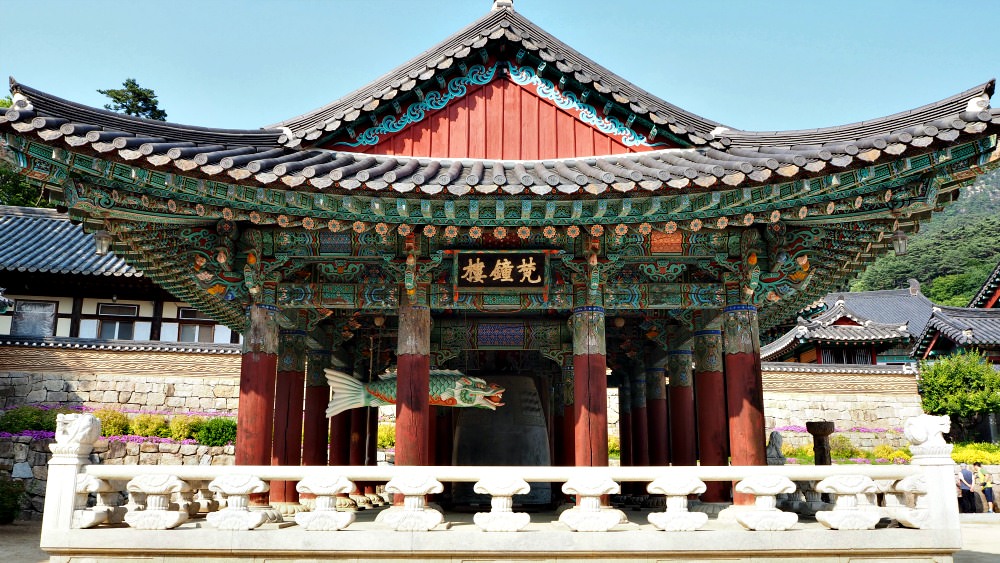 Rightside view
Rightside view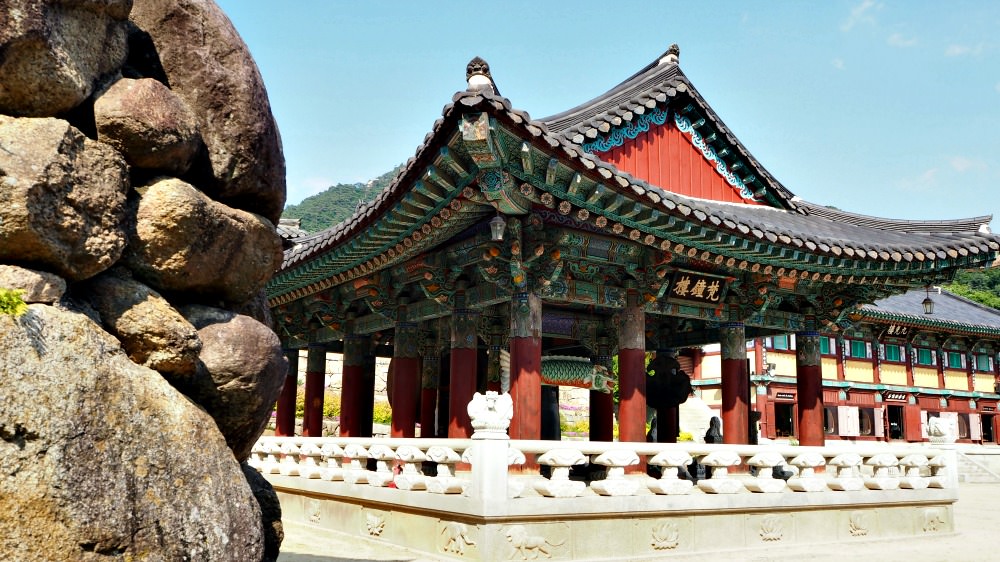 Back-left side view
Back-left side view Haksadae or Hill of scholar
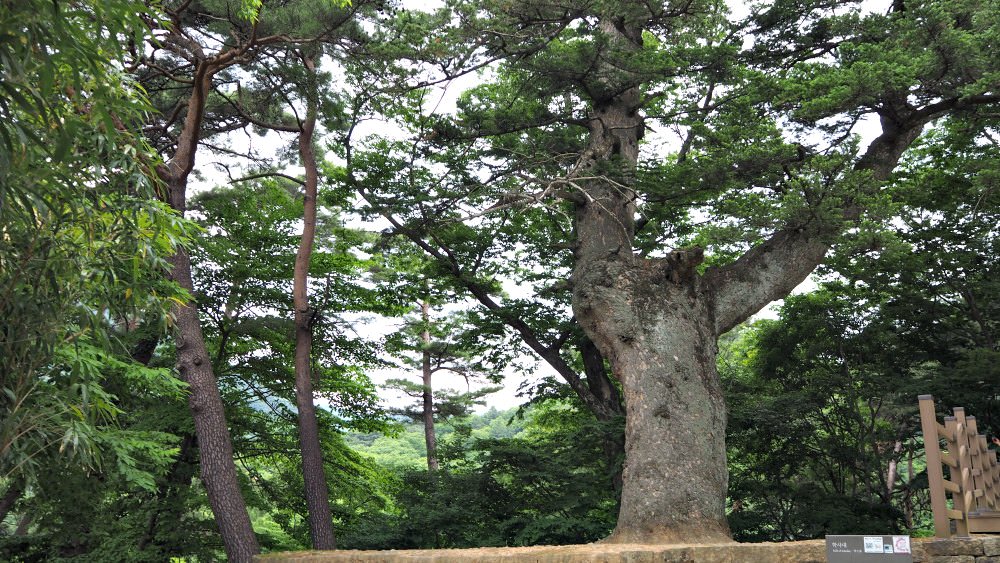 Hill of Scholar or Haksadae
Hill of Scholar or HaksadaeIt is where Choe Chiwon (857-), the great scholar during the late Silla Kingdom, spent his remaining secluded life. Story has it that when he plays his Gayageum (a 12-stringed musical instrument), cranes nearby would come to hear him play.
One day, he struck his cane into the ground and (suddenly) a fir tree started to grow. The tree (believed to be the one in the photo) seems to be growing well except that its branches are drooping down. (I don't know what it means!)
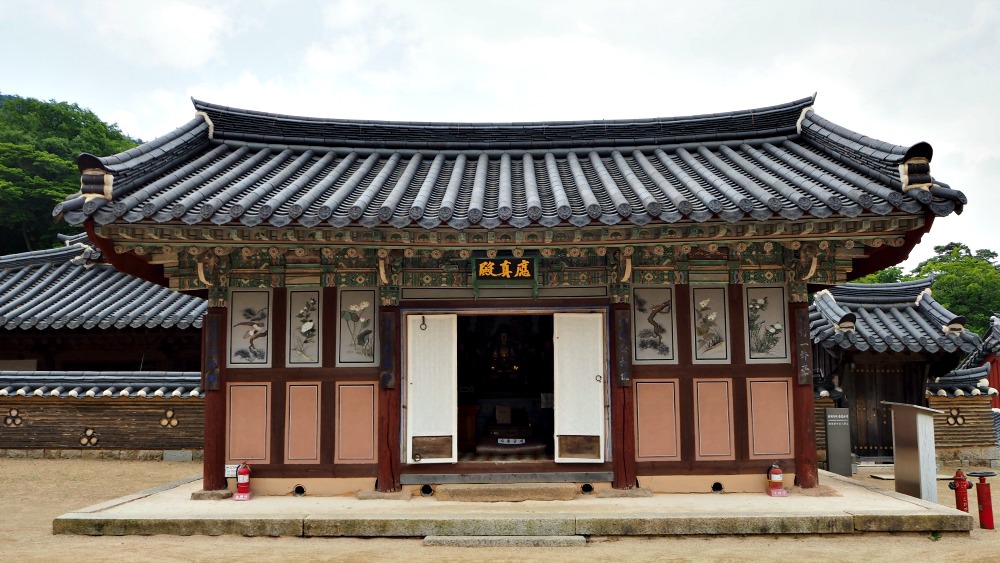 A prayer room
A prayer room Gwaneumjeon (Lecture Hall)
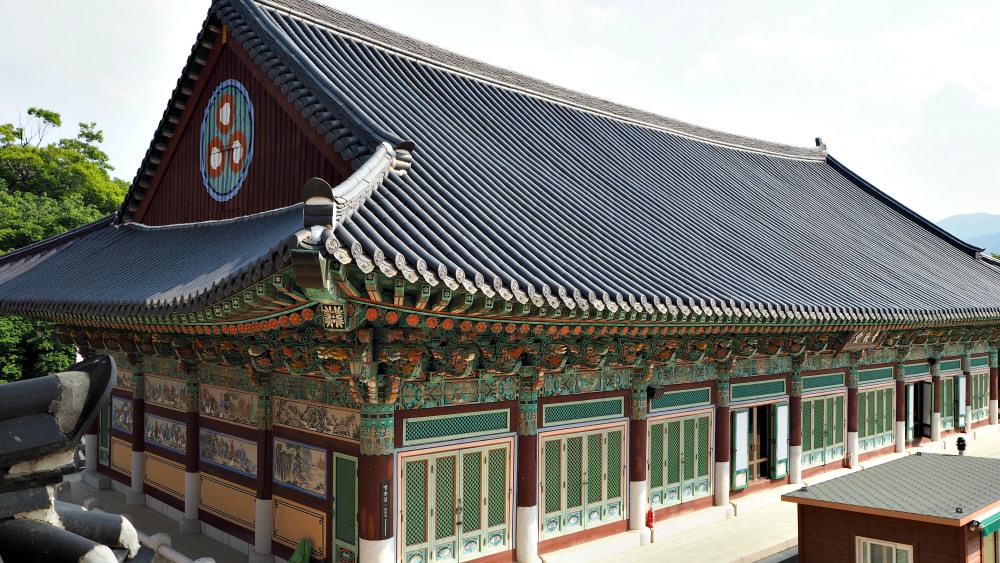 Gwaneumjeon Hall
Gwaneumjeon HallPotable Spring Water
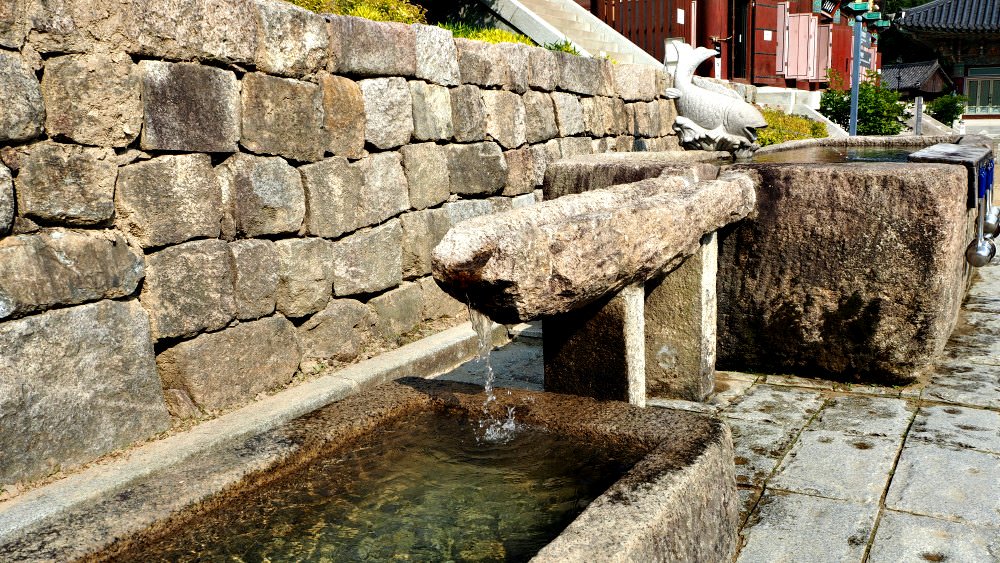 Potable spring water inside the temple site
Potable spring water inside the temple siteWishing Tree
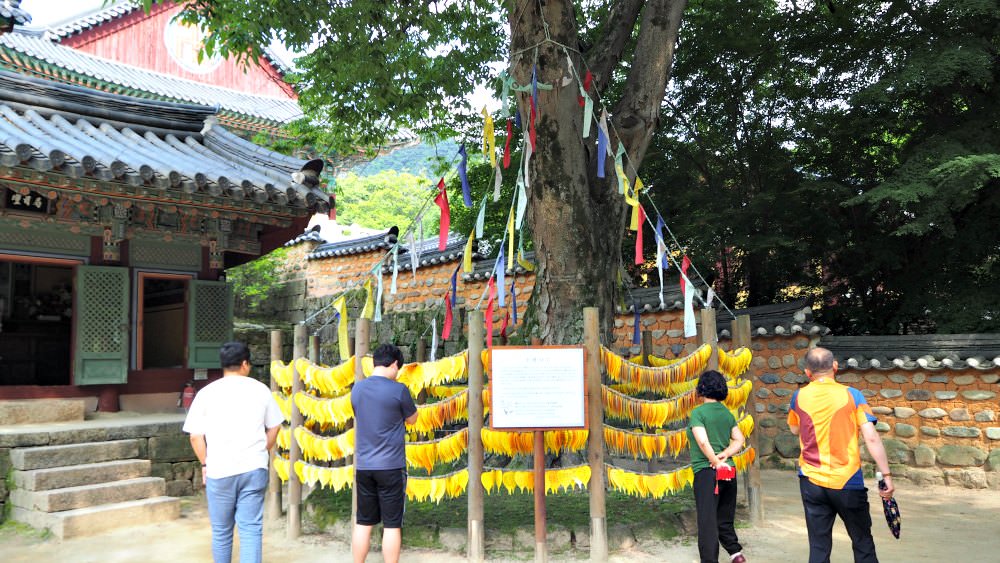 Wishing Tree near the entrance grate of Haeinsa
Wishing Tree near the entrance grate of HaeinsaTripitaka Koreana Cannon
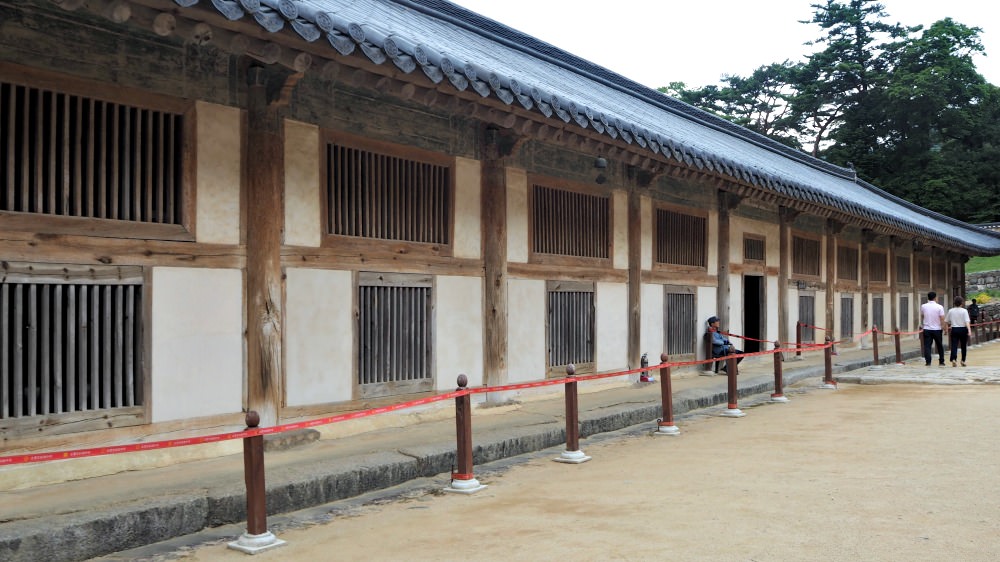 Tripitaka Koreana - Eight Thousand Woodblocks of Buddhist Teachings (UNESCO World Heritage)
Tripitaka Koreana - Eight Thousand Woodblocks of Buddhist Teachings (UNESCO World Heritage)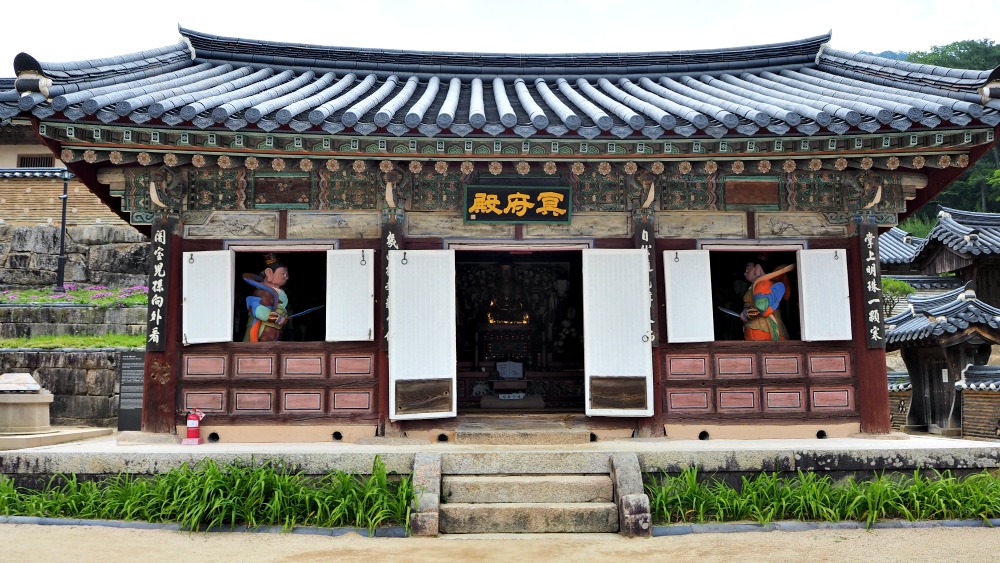 Prayer Hall with the Four Heavenly Guardians/Kings
Prayer Hall with the Four Heavenly Guardians/Kings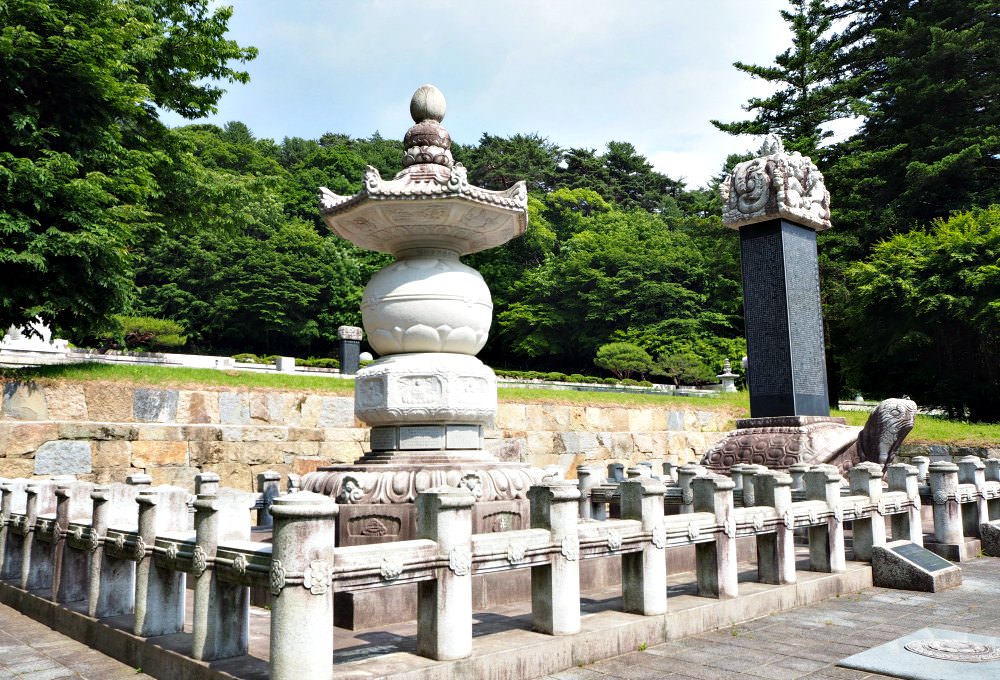 Tombs and relics garden right outside the temple area
Tombs and relics garden right outside the temple area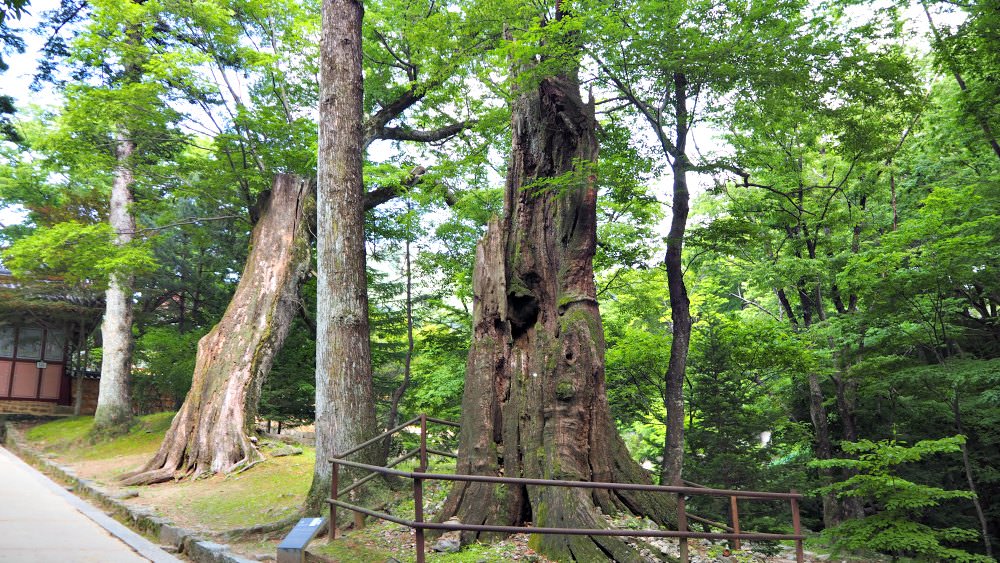 An ancient tree (over 1,200 years old) near Haeinsa Temple's entrance area
An ancient tree (over 1,200 years old) near Haeinsa Temple's entrance area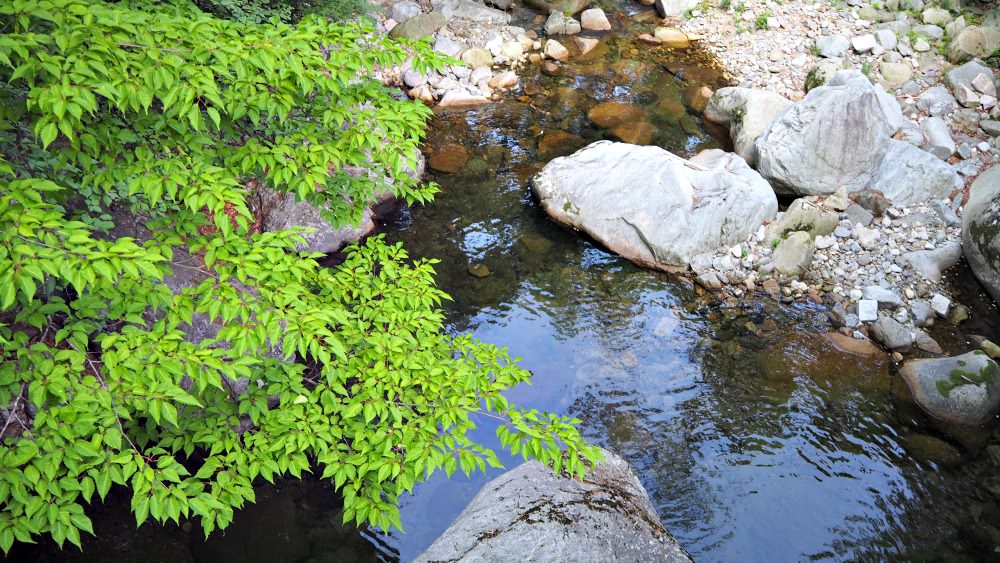 Fresh pool of stream at Haeinsa
Fresh pool of stream at HaeinsaIn conclusion, Haeinsa Temple is a great place not only among Buddhists but also for those who are seeking a peaceful place. It is a refuge for pilgrims, and a site to experience bliss and harmony with nature.
Hikers and travelers would find Haeinsa Temple as their resting place after a day's exploration of the famous Gayasan National Park's beautiful natural features.
I hope you enjoyed this page and found it useful. Please, Like or Comment below. Safe travels!
- Home
- Temples in South Korea
- Haeinsa Temple
Get Exciting Activities
Book one of our exciting activities today to experience the thrill of a lifetime! Take advantage of this opportunity and secure your spot in advance.
Hotel Map Guide
Find your affordable, accessible, and comfortable hotel in Seoul at Agoda.Com. See the hotel map below...
Hotel Booking Guide
Find affordable and amazing hotels on Agoda.com using the search box below. Book now to enjoy great discounts and save!
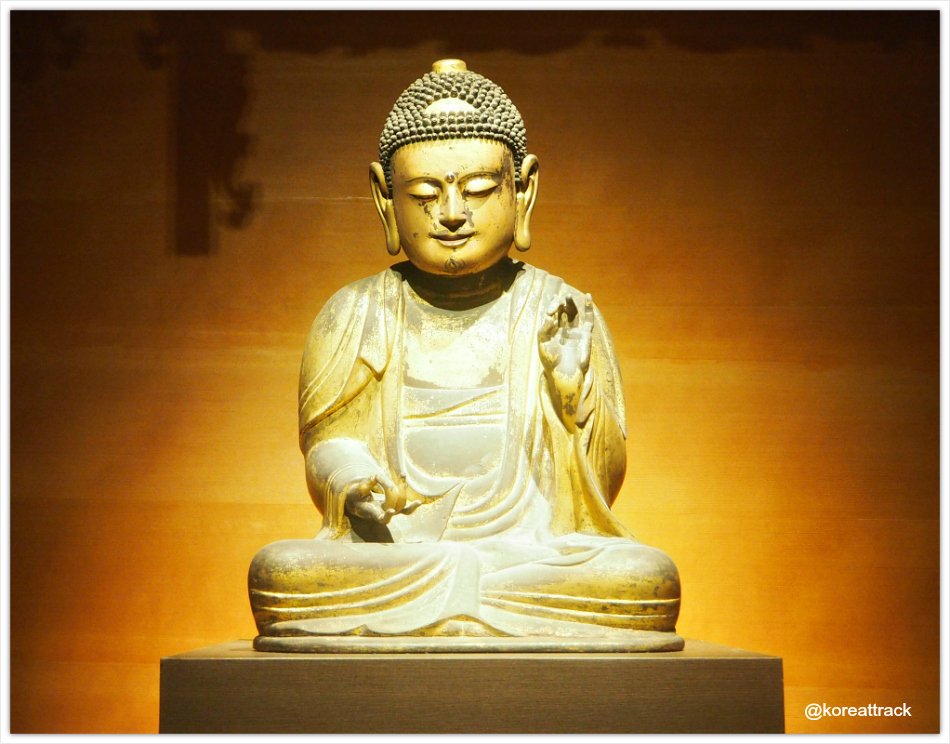
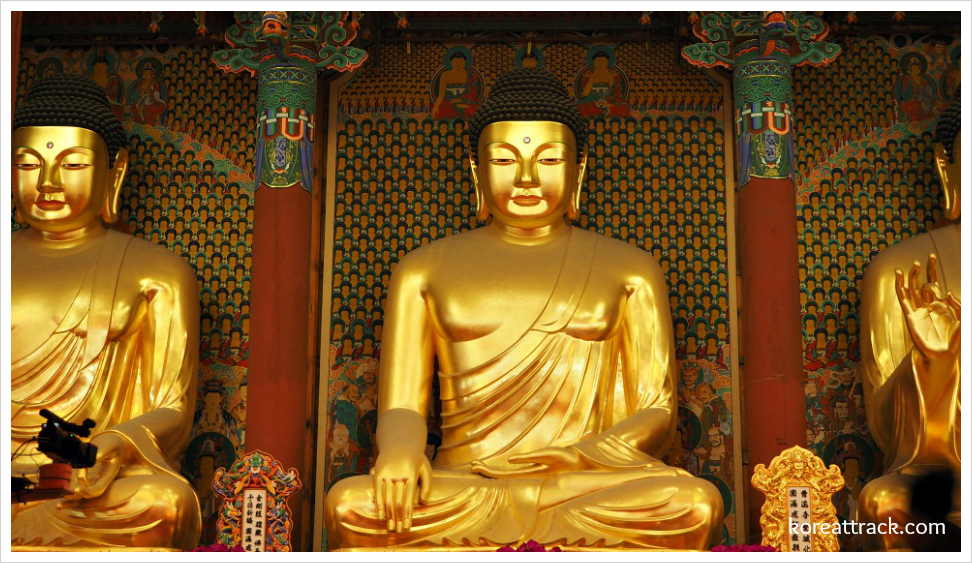
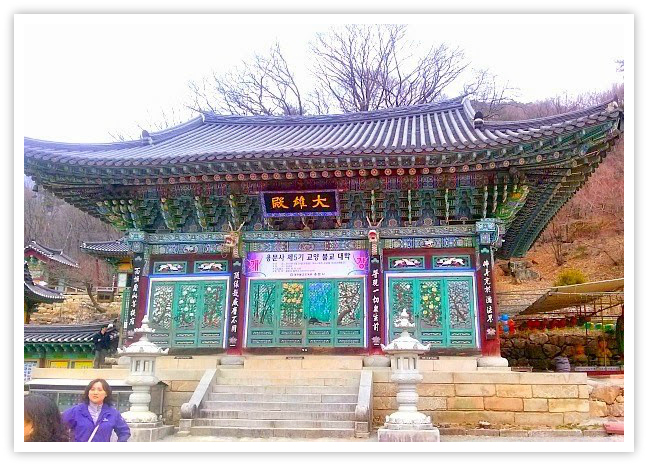


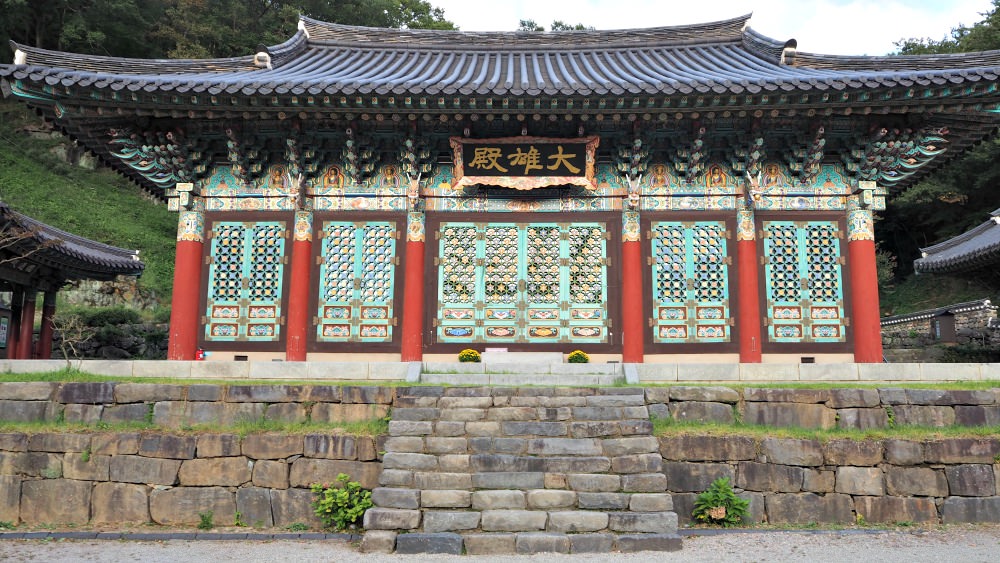




New! Comments
What do you think about this page? Leave me a comment in the box below.